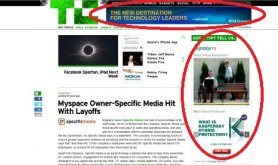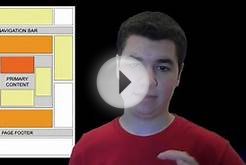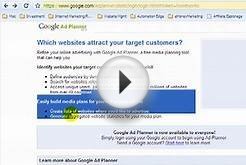Many websites rely on advertising for revenue. Google knows this, even offering its own advertisement placement service, AdWords. However, not all types of ad placements are regarded equally.
Google considers some advertising tactics disreputable or spammy and will penalize sites that employ them. It's important to know which types of advertising are acceptable, and which ones have the potential to get you in trouble.
1. Excessive ads above the fold
"Above the fold" refers to what a viewer can see when a page is first loaded. A viewer typically visits a webpage for the content, and they expect content to be the first thing they see. If there is nothing but advertisements above the fold, with the actual content buried somewhere below it, then the page is not well designed.
Google takes this into account when determining rankings - pages with an excessive number of advertisements above the fold are penalized. One banner ad is acceptable, of course.
2. Full-screen floating ads
Full-screen floating ads, also known as overlay ads, are those that fill visitors’ entire browser windows, preventing them from viewing any content on the website until the ad finishes or they locate the button to close it. Because they block the visitor from seeing any of the content on the page, impatient people who don't want to hunt for the tiny "X" to close the ad are more likely to just hit the back button.
This contributes to a site's bounce rate - the number of visitors who, upon coming to the page, immediately leave it. Google considers a high bounce rate to be a sign of a poor site, and as such, will give it a lower ranking.
3. Roadblocks
Roadblocks, also called interstitials, are forms of full-page advertising that go beyond full-screen floating ads. They redirect visitors to a full-page ad at a different URL, along with a button for the user to continue to their destination. Roadblocks are even more likely to contribute to a high bounce rate than full-screen floating ads. Upon seeing that they're getting redirected to a different URL, most visitors' instinctive reaction is to assume they clicked on spam and immediately hit the back button.
Users may do this before the page even finishes loading and without looking for the “continue” button. As with full-screen floating ads, putting up obstacles between visitors and the content they seek is only likely to result in penalization.
4. Auto-playing audio or video ads
There are few things as disruptive to user experience as auto-playing ads with audio. Faced with the sudden burst of noise, most visitors are going to frantically try to pause or mute the ad. If they can't find the stop button quickly - or worse, if there is no way to mute the sound - they'll close the window. Even more detrimental are multiple auto-playing ads, which result in overlapping audio and incoherent babble.
The worst-case scenario involves a visitor in a public place such as a library where the sudden sound causes a disruption or draws attention. The website visitor, the person you are most trying to please with your website, will feel angry and embarrassed. These emotions are not likely to result in repeat visits from those users, let alone result in a purchase.
If you feature audio or video ads on your site, make sure they only play when clicked. Triggering video or audio on a mouse rollover isn't enough - that just turns large sections of your website into audio landmines, which the typical visitor would rather avoid than navigate.
5. Ads disguised as content
To get more traffic to pay-per-click ads, some sites attempt to disguise the ads as content. Common techniques include a "related content" section at the bottom of an article, which looks like a series of links to articles on similar topics, or a navigation toolbar that doesn’t actually take you anywhere worthwhile.
These links are actually all ads. Any method that seeks to deceive users into clicking on advertisements is against Google guidelines, and can result in a site being penalized.
6. Multiple ads dividing main content
Some sites try to maximize the impact of their ads by placing them near the main content rather than off to the side or bottom. In the case of multiple advertisements, this results in an interspersed pattern of content: ad, content, ad, content, ad, and so forth.
Google's quality guidelines specifically call this out as poor site design as it is jarring to the visitor and disrupts the flow of the content. If you want to place an ad within your content, it might be best to limit it to only one per page.













